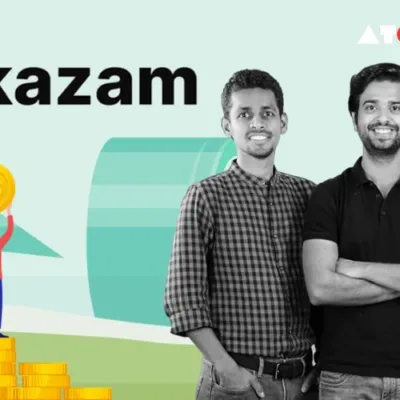Fintech startup Simpl has announced a strategic shift focusing on its Pay Later service to enhance operational efficiency and drive growth. This new direction, outlined by founder and CEO Nitya Sharma in a company-wide email, comes on the heels of recent job cuts and emphasizes improving unit economics, expanding the network, and reducing operational costs.
The Strategic Blueprint
In the email, Sharma highlighted the pivotal role of the Pay Later service in Simpl’s future strategy. “Pay Later will be the bedrock of our strategy going forward. We will be focused on one product and we will make it insanely great,” he stated. This focus is part of a broader plan to refine operations, manage risk, and drive profitability.
Simpl’s Pay Later service allows users to make purchases ranging from Rs 1,500 to Rs 20,000, with a 15-day billing cycle and no interest if paid on time. This product has become integral to the company’s value proposition, offering customers flexible payment options and enhancing their shopping experience.
Operational Adjustments and Cost-Cutting Measures
To streamline operations, Simpl has announced a hiring freeze and is exploring additional cost-cutting measures. The company, which employs over 600 people according to LinkedIn, recently cut 100 jobs to better align with its new strategic priorities.
In a bid to improve unit economics, Simpl plans to adjust spending limits for different consumer cohorts. This adjustment aims to better manage risk and ensure that spending aligns with customer behavior patterns. The company will also focus on expanding margins by increasing availability and consumption in high-margin categories such as fashion, beauty and personal care (BPC), and direct-to-consumer (D2C) brands.
Addressing Customer Acquisition and Engagement
One of the significant challenges Simpl faces is slow customer acquisition. To tackle this, the company plans to standardize consumer onboarding and education across all channels. Emphasizing the first 30 days of consumer experience, Simpl aims to work closely with merchants to achieve joint goals of retention, increasing average order value (AOV), and fostering positive consumer behavior.
“As we achieve these goals, we will be a company that will be positioned to grow fast and grow efficiently at a very low operational cost. This will be our new high ground that we should achieve in the next 60 days,” Sharma’s email emphasized.
Financial Performance and Market Challenges
Founded in 2015 by Nitya Sharma and Chaitra Chidanand, Simpl experienced rapid growth in FY22. The company’s revenue surged 17-fold to Rs 31.63 crore, up from Rs 1.81 crore in FY21, according to a report by Entrackr. However, this growth came with significant financial strain, as losses increased 22.5 times to Rs 144.28 crore in FY22, compared to Rs 6.39 crore in FY21.
In 2021, Simpl raised $40 million in a Series B funding round led by Valar Ventures and IA Ventures. Despite this infusion of capital, the company has struggled with cash burn and plateauing new user acquisitions.
Regulatory Environment and Industry Impact
The Reserve Bank of India’s (RBI) recent measures to moderate credit expansion, particularly in unsecured consumer loans, have created additional challenges for Simpl and other Buy Now Pay Later (BNPL) players. These regulations impose higher capital adequacy norms on banks and non-banking financial companies (NBFCs), and restrict non-bank lending activities conducted through prepaid payment instruments (PPIs) like prepaid cards and digital wallets.
These regulatory changes have forced BNPL companies to reassess and adjust their business models. Simpl’s new strategic focus on its Pay Later service and operational efficiency reflects its response to these regulatory pressures and the evolving market landscape.
Future Outlook
Simpl’s renewed focus on the Pay Later service, combined with efforts to improve unit economics, expand its network, and reduce operational costs, positions the company for a more sustainable growth trajectory. By concentrating on high-margin categories and optimizing consumer onboarding, Simpl aims to enhance customer satisfaction and retention.
The company’s strategy underscores the importance of balancing innovation with financial prudence in the fintech sector. As Simpl navigates regulatory challenges and market dynamics, its commitment to refining its core product and operational model will be crucial for long-term success.
Focusing on Core Product: Pay Later
Simpl’s decision to center its strategy around the Pay Later product underscores the importance of specialization in fintech. By honing in on one product and striving for excellence, Simpl aims to create a seamless, user-friendly experience that sets it apart in a competitive market. This strategic focus will likely involve continuous improvements and innovations within the Pay Later service to ensure it meets and exceeds customer expectations.
Enhancing Unit Economics
Improving unit economics is a critical component of Simpl’s strategy. Adjusting spending limits for different consumer cohorts allows the company to better manage risk and ensure profitability. This approach involves a detailed analysis of consumer behavior to tailor financial products that meet specific needs while maintaining a balance between risk and reward.
Expanding High-Margin Categories
To boost profitability, Simpl plans to focus on high-margin categories such as fashion, beauty and personal care (BPC), and direct-to-consumer (D2C) brands. These sectors typically offer higher profit margins, which can significantly improve the company’s bottom line. By expanding its presence in these categories, Simpl aims to attract more consumers and increase transaction volumes.
Optimizing Consumer Onboarding and Education
A streamlined onboarding process is essential for customer retention and satisfaction. Simpl’s emphasis on uniform consumer onboarding and education across all channels ensures that new users have a positive first experience. This involves clear communication, easy-to-understand product information, and responsive customer support. By focusing on the first 30 days of consumer experience, Simpl aims to build a strong foundation for long-term customer relationships.
Collaborating with Merchants
Working closely with merchants is another key aspect of Simpl’s strategy. By aligning goals with merchants, Simpl can drive mutual benefits such as increased average order value (AOV) and improved consumer behavior. This collaboration involves joint marketing efforts, shared insights, and coordinated initiatives to enhance the overall shopping experience.





